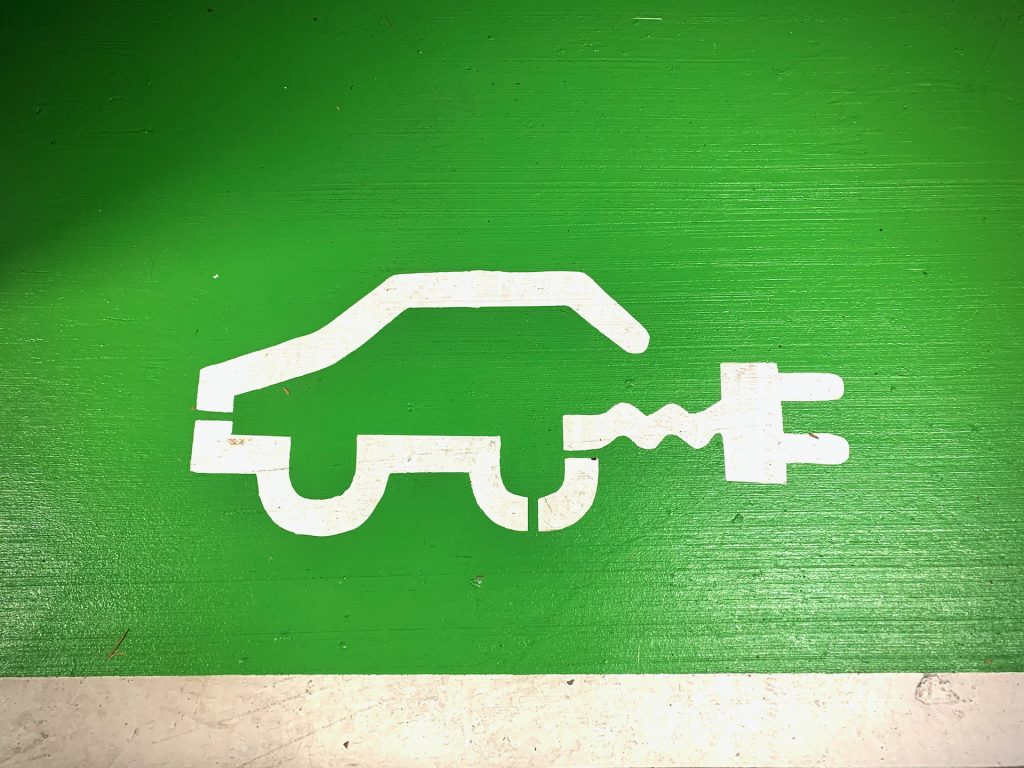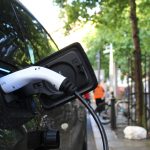Electric vehicles are still somewhat new to the auto world, and there are some barriers that have slowed adoption rates. These new vehicles were expensive and had short ranges, and there weren’t a lot of charging locations. If you lived in the country, it may have been hard to justify purchasing an EV.
Times are changing, and EV adoption rates are increasing as the technology matures. Still, according to JD Power, EVs only account for roughly one percent of cars on US roads as of 2023. And that’s just an average. EV adoption by state is not equal, and some states are doing better than others. Increasing those numbers across the board is an important part of making our transportation system more environmentally friendly.
Convincing people to make the switch is easier said than done, however. Not everyone is ready to jump on board. Even those who want an EV may have financial barriers or worries about the complexity and limitations of new technology. For the rest of us, a large part of adoption comes down to our personality types.
The EV Adoption Curve
When we look at technology adoption rates, we find that most people fall into one of five distinct groups. The technology adoption curve distributes those groups across a bell curve. The first to adopt are on the left, and the last are on the right. The groups in the curve are innovators, early adopters, early majority, late majority and last to adopt.
It really doesn’t matter what type of technology we are talking about. Most of us fall into one of these five categories. Let’s look at how common behaviors and economic factors within these groups affect adoption of new technology.
Innovators
The first group on the EV adoption curve are the innovators. They make up approximately 2.5% of consumers. Innovators are enamored with the technology and aren’t afraid of failure. They will gladly try out new technology to show the rest of us what it can and can’t do. Since new technology is typically expensive when released, innovators are often wealthy or have a vested interest in the tech.
Early Adopters
The next group on the curve are the early adopters. They make up another 13.5% of the population. Early adopters are usually more risk-averse than innovators. Once information hits the market, they will dig in and often review or promote the new technology. They’ve got enough money to buy in relatively early, but won’t make risky moves as readily as innovators.
Early adopters are often thought leaders or influencers and may be the most important group in driving EV adoption rates. They’ll fill us in on their experience and answer a lot of questions the majority wants answered. Once they’ve bought in, the early majority is ready to move.
Early Majority
The 34% that make up the early majority feels comfortable adopting technology only after it has been vetted. This group often has less money than innovators and early adopters and wants to ensure their money is spent on quality products. Still, they are willing to buy into new technology if they see the value in it. The more in touch they are with the innovators and early adopters, the more comfortable they feel making that leap.
Late Majority
The late majority is a demographic that makes up another 34% of the population. They will be ready to adopt once the technology has been around for a while. They want to see how it performs and what problems they may face through adoption. The late majority is often highly risk averse, as they can’t always afford to buy into tech that won’t stick. Once they’re on board, we’ve reached the mass adoption phase.
Last to Adopt
That leaves us with the last to adopt. This 16% is late due to finances, age or a limited set of outside influences. If they’re older and unfamiliar with tech, they may only adopt when their children can find them a good deal. By the time the last to adopt join the party, the tech is often mainstream or on its way out.
Barriers to Adoption
Through the adoption curve, we can see some of the behavioral and socioeconomic factors that create each group. When it comes to the EV adoption rate, there are specific factors important to the groups in the latter half of the curve.
Cost
A primary barrier to increasing the electric vehicle adoption rate since the beginning has been cost. This is a new technology, which means the costs for innovators and early adopters can be high. As the technology evolves and grows, costs will inevitably come down.
Range
Another barrier that has a big impact is range. When EVs were first introduced, the range wasn’t great. Pair that with relatively few charging stations in the area, and people who make longer trips still aren’t convinced they’ll have enough juice.
This barrier is especially pronounced in rural areas, where people make longer trips on average. Someone in an urban area may only travel a mile or two to work, school or the grocery store. But rural residents often travel many miles to complete each of their daily errands. They want their range to get them through.
Access to Charging Stations
Speaking of those who drive long distances daily, access to charging stations is another common concern. While there are gas stations on nearly every busy corner in town, EV charging stations are spread thinner. Those of us without a fast charging station in town may worry we’ll be left stranded somewhere down the road.
Government initiatives have led to a massive increase in EV charging stations across the country, and this trend shows little signs of slowing. As charging stations become more commonplace, this concern will shrink considerably.
Longer Refueling Times
When we do find charging stations, EVs do take a little longer to refuel than our old gas guzzlers did. Where you may be able to fill your tank in a few minutes, it can take 20-50 minutes to charge an EV. Your time will vary based on the state of the battery and the particular charger. Luckily, recent advances are making stations more widely available and speeding charging times.
Decreased Range in Winter
Another concern many people have is the range they’ll get on a charge in the winter. While it’s true that EVs get less mileage and take longer to charge in winter, all vehicles’ performance wanes in cold weather. But for those who live in colder climates, this is a real concern.
Just like with most things, the winter requires additional planning. Those who regularly travel long distances in the winter will want to plan routes. As we become accustomed to electric vehicles, a combination of planning and technological advances will leave this concern in the dust.
Global EV Adoption Rates
All concerns considered, many countries are ahead of the curve when it comes to EV adoption rates. Northern European countries like Norway, Sweden, and Iceland lead the pack in EV adoption. In fact, The EV adoption rate in Norway surged as early as 2020, when over half of vehicles sold were EVs. The EV adoption rate in Europe should give us hope for the future of the EV adoption rate in the US.
Those countries have long, cold winters and have been able to make the switch with few issues. It comes down to feasibility and a willingness to change. The percentage of electric cars in the USA can rival the percentage of electric cars in Europe if we overcome some barriers to entry. Let’s look at some of the advancements that will lead to increased EV adoption rates in the US.
Accelerating the EV Adoption Rate in the US
Barriers to adoption were once steep, but we’re turning a corner. There are a number of factors that will significantly increase electric car adoption rates in the near future.
Increased Production
Electric vehicle manufacturers are significantly increasing production. This will help drive adoption in a couple of important ways. First, that increased production means EV prices will drop year after year. For those whose main concern is the upfront cost, this may tip the scale. Another way increased production will drive adoption is through sheer visibility. The more EVs there are on the road, the more our late majority will see the feasibility and benefits.
Lower Cost of Owning and Operating
Another cost benefit comes in the form of decreased owning and operating costs. EVs have fewer moving parts and require less routine maintenance than internal combustion engine (ICE) vehicles. The fact that they don’t run on gas presents additional savings. If you get a fast and reliable charging station at home, gas station visits may become a thing of the past.
Environmental Concerns
The effects of climate change on our world are becoming more and more evident every day. With that visibility has sprung a sense of urgency to do something about it. Since a large portion of our emissions comes from gas-powered engines, increasing the EV adoption rate will help immensely. As EVs become an affordable option to reduce our carbon footprints, the environmentally-minded will be more likely to adopt.
Experience
As more EVs make their way onto the roads, more of us will interact with them. Whether our friend owns one, we hail an electric rideshare vehicle, or our child takes an electric bus to school, we will come into contact with them. That ongoing experience will make them commonplace in our minds. It may even serve as the tipping point when we make our next vehicle purchase.
The Educational Aspect
The more people know about EV’s and their positive impact on the environment the more likely it is that EV adoption rates will increase. So, how do we get more people to understand the benefits of EV adoption?
One way to grow EV knowledge is by educating young people about EV technology and how it positively impacts the world we live in. Young people are our future drivers and will most likely purchase and drive EVs as adults. Today’s middle schoolers will be in their mid-twenties by 2035, when over 70% of vehicles on US highways will be electric vehicles. By educating young people, the future of EV’s will be in their hands. That knowledge will help increase EV adoption rates moving forward.
NTC offers K-12 education outreach programming centered around decarbonization and beneficial electrification, including how EV’s work and why they are good for the environment. Through education and overcoming barriers, the US will bridge the adoption gap. As EV adoption by country begins to level out, we will see positive impacts both environmentally and economically. That means a brighter future for all of us. If you’re looking for ideas to help you make a difference, they’re only a click away.













